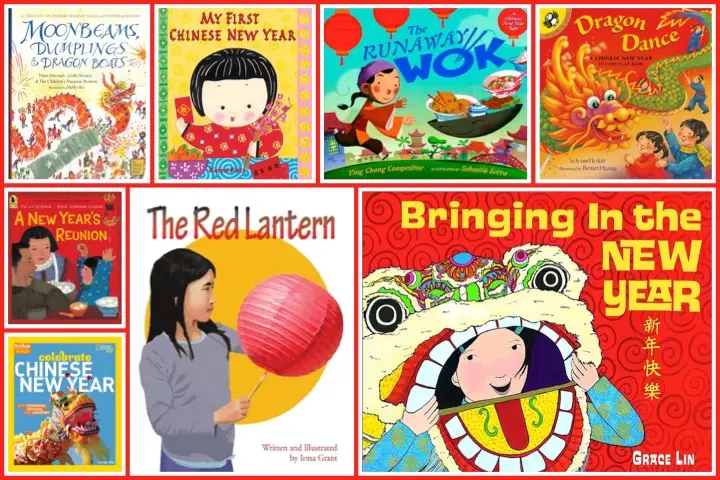Celebrate Chinese New Year with your little one! Explore heartwarming stories, and festive traditions, with these Chinese New Year Books for Kids!
Looking for ways to bring the magic of Chinese New Year home to your kids? Look no further than the enchanting world of children’s books! From whimsical tales of runaway woks to heartwarming reunions with loved ones, these delightful reads spark curiosity, celebrate cultural traditions, and offer engaging activities to bring the festivities to life. So cuddle up with your little one, dive into these vibrant stories, and create memories that will last a lifetime.
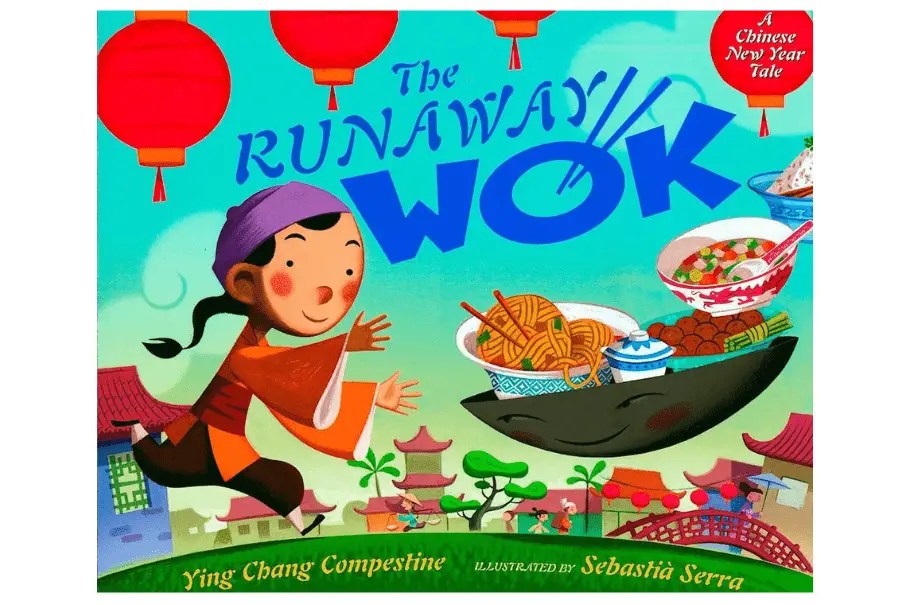
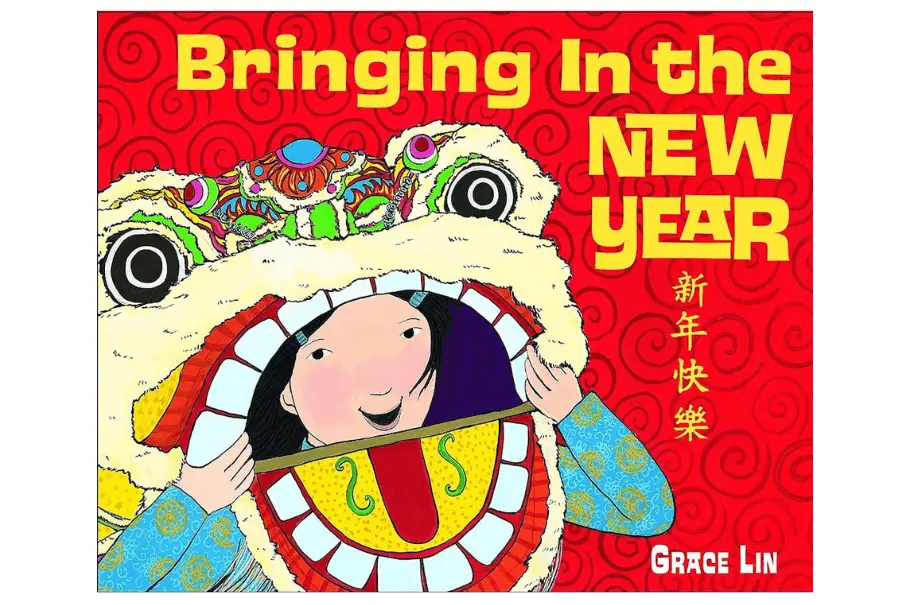
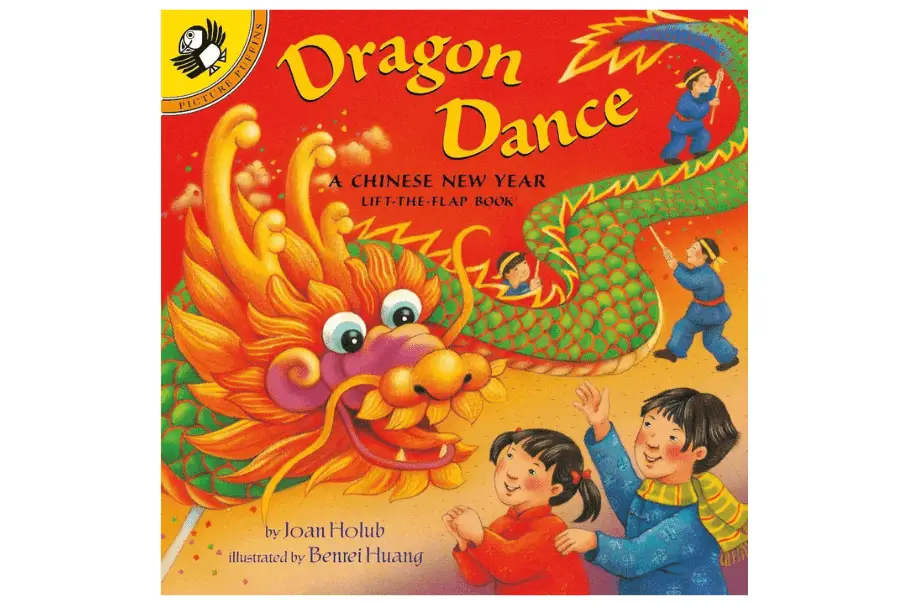
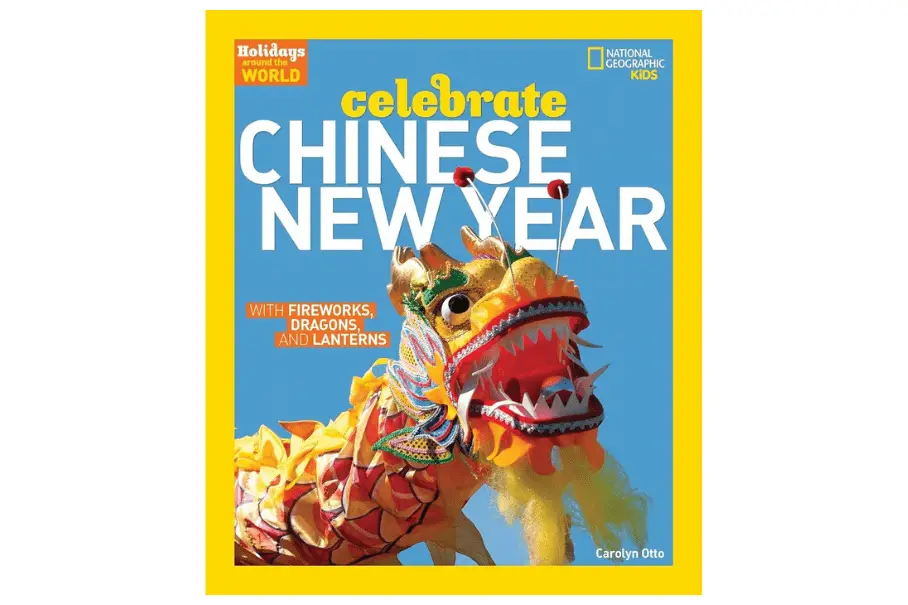
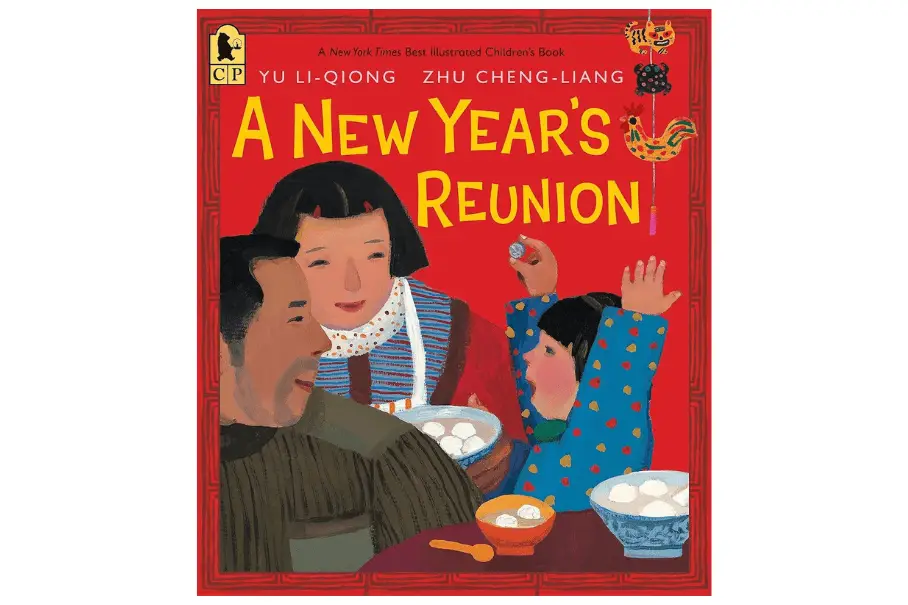
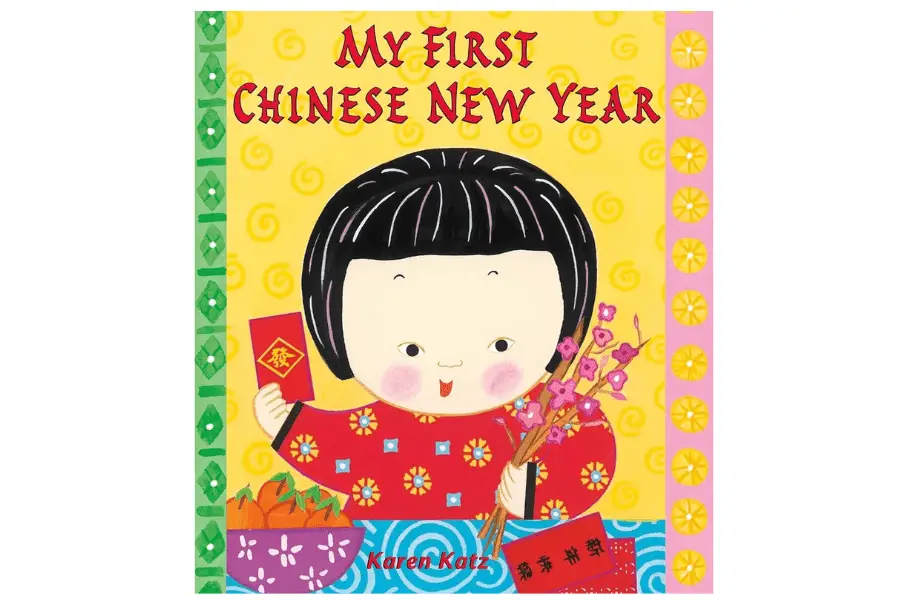
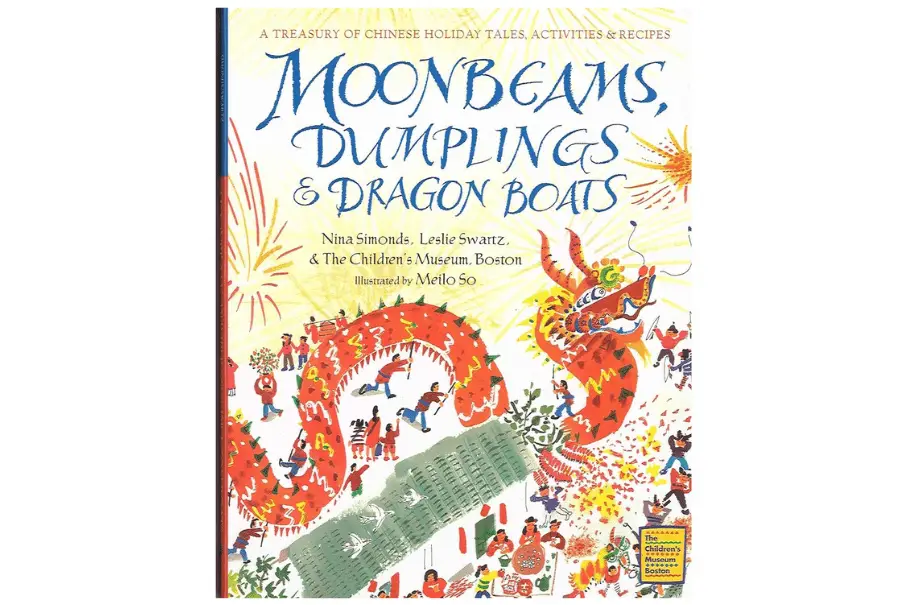
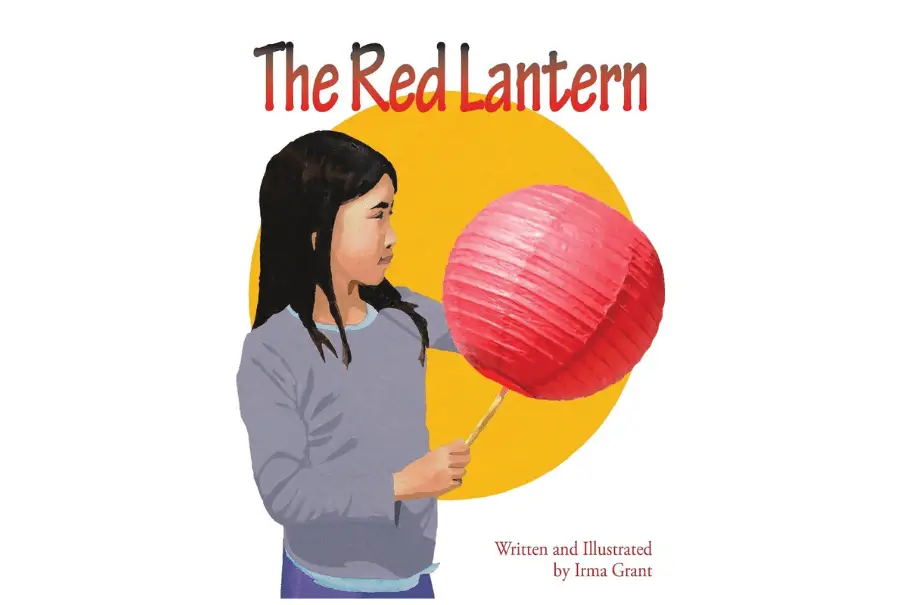
MORE FUN STUFF TO CHECK OUT! Scroll down for more interesting facts about the Lunar New Year and Chinese New Year traditions!
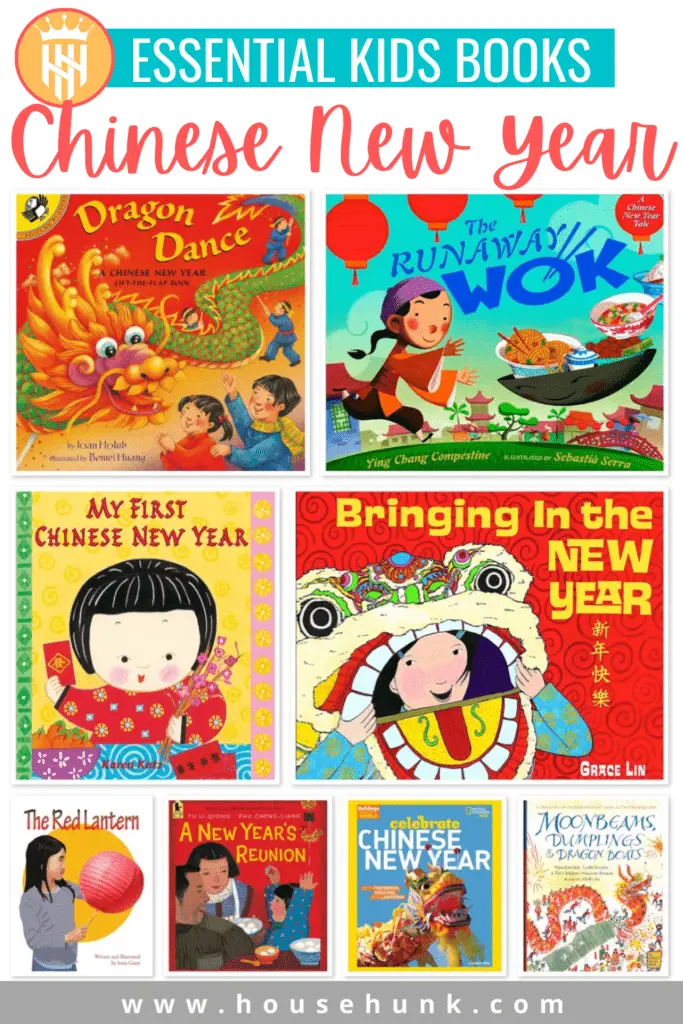
What are 4 symbols that represent Chinese New Year?
- Red envelopes: These are small packets of money that are given to children and elders as a way of expressing good wishes and blessings. The amount of money is usually an even number, and the color red signifies luck and happiness.
- Lanterns: These are colorful and decorative lights that are hung up or carried around during the festival. They symbolize hope and brightness for the new year. On the last day of the festival, people release lanterns into the sky or float them on water, making wishes for the future.
- Couplets: These are pairs of poetic phrases that are written on red paper and pasted on the doors or walls of houses. They usually express positive and auspicious messages, such as prosperity, longevity, harmony, and peace.
- Dumplings: These are one of the most popular foods eaten during the festival. They are made of dough filled with various ingredients, such as meat, vegetables, or sweets. They are shaped like crescent moons, which represent wealth and reunion.
How long is a Chinese year?
A Chinese year is about 354 or 355 days long, depending on the number of lunar months in that year. A lunar month is about 29.5 days long, which is the time it takes for the moon to complete one cycle around the Earth. Sometimes, there is an extra month added to the Chinese year, called a leap month, to keep the calendar in sync with the seasons. This happens about every three years.
What 12 signs are often seen on Chinese calendars?
The 12 signs are the animals of the Chinese zodiac, which are Rat, Ox, Tiger, Rabbit, Dragon, Snake, Horse, Goat, Monkey, Rooster, Dog, and Pig. Each sign has its own personality traits, strengths, weaknesses, and compatibility with other signs. People born in the same year share the same sign, and their characteristics are influenced by it.
What are 3 important facts about the Lunar New Year?
- Lunar New Year is the most important festival in China and many other Asian countries, such as Korea, Vietnam, Singapore, and Malaysia. It is a time to celebrate the end of the old year and the beginning of the new one, with various customs, traditions, and activities.
- Lunar New Year is based on the lunar calendar, which follows the cycles of the moon and the sun. The date of the festival changes every year, but it usually falls between January 21 and February 20 in the Gregorian calendar. Each year is associated with one of the 12 animals of the Chinese zodiac, which have different meanings and influences.
- Lunar New Year is a time to honor one’s ancestors, family, and friends, and to wish them good luck, health, and happiness. People visit their relatives and friends, exchange gifts, eat special foods, and enjoy various activities, such as lion dance, dragon dance, firecrackers, fireworks, lanterns, couplets, and riddles.
Who created Chinese New Year?
There is no definitive answer to who created the Chinese New Year, as it is a festival that has evolved over thousands of years. However, one of the legends says that it originated from a mythical beast called Nian, who would attack people and animals on New Year’s Eve. People discovered that Nian was afraid of loud noises, fire, and the color red, so they used these things to drive him away. This is why people set off firecrackers and fireworks and wear red clothes and decorations on Chinese New Year.
Why is red worn on Chinese New Year?
Red is worn on Chinese New Year because it is considered a lucky and auspicious color in Chinese culture. It represents joy, vitality, prosperity, and success. It also symbolizes the fire that scared away the monster Nian, according to the legend. Wearing red clothes and accessories is believed to bring good fortune and ward off evil spirits.
What are 10 fun facts about China?
- China is the most populous country in the world, with about 1.4 billion people, or about 18% of the world’s population.
- China is the third largest country in the world by area, after Russia and Canada, with about 9.6 million square kilometers, or about 6.4% of the world’s land area.
- China has the longest continuous civilization in the world, dating back to about 5000 years ago. It has a rich and diverse history, culture, and heritage, with many inventions, achievements, and contributions to the world.
- China has the longest wall in the world, the Great Wall of China, which stretches for about 21,000 kilometers, or about 13,000 miles. It was built over several dynasties, starting from the 7th century BC, to protect China from invaders and nomads.
- China has the largest number of pandas in the world, with about 1,800 living in the wild and about 500 in captivity. Pandas are native to China and are considered a national treasure and a symbol of peace and friendship.
- China has the largest number of languages in the world, with about 300 spoken languages and dialects. The official language is Mandarin, which is also the most widely spoken language in the world, with about 1.1 billion speakers.
- China has the largest number of UNESCO World Heritage Sites in the world, with 55 sites, including cultural, natural, and mixed sites. Some of the most famous ones are the Forbidden City, the Terracotta Army, the Potala Palace, and the Mount Huangshan.
- China has the largest number of internet users in the world, with about 989 million users, or about 71% of the population. China also has the largest number of mobile phone users in the world, with about 1.6 billion users, or about 114% of the population.
- China has the largest number of tea drinkers in the world, with about 2.2 million tons of tea consumed per year, or about 30% of the world’s total. Tea is an integral part of Chinese culture and society and has many varieties, such as green tea, black tea, oolong tea, and pu-erh tea.
- China has the largest number of chopstick users in the world, with about 45 billion pairs of chopsticks used per year, or about 6 pairs per person. Chopsticks are the traditional utensils for eating in China and many other Asian countries, and have a history of over 3000 years.
Is Chinese New Year 365 days?
No, Chinese New Year is not 365 days. It is a festival that lasts for 15 days, from the first day of the first lunar month to the 15th day, which is called the Lantern Festival. The date of Chinese New Year changes every year, depending on the lunar calendar, but it usually falls between January 21 and February 20 in the Gregorian calendar.
Why is February Chinese New Year?
February is not always Chinese New Year. The date of Chinese New Year changes every year, depending on the lunar calendar, which follows the cycles of the moon and the sun. The lunar calendar has 12 or 13 months per year, and each month has 29 or 30 days, depending on the phase of the moon. Sometimes, there is an extra month added to the lunar year, called a leap month, to keep the calendar in sync with the seasons. This happens about every three years. Because of this, the date of Chinese New Year can vary from year to year, but it usually falls between January 21 and February 20 in the Gregorian calendar. In 2024, Chinese New Year will be on February 10.
How was Chinese New Year invented?
There is no clear answer to how Chinese New Year was invented, as it is a festival that has evolved over thousands of years. However, some historians believe that it originated from the ancient practice of worshipping the gods and ancestors at the end of the winter and the beginning of the spring, which was a time of renewal and rebirth. This practice was later combined with the lunar calendar and the zodiac system and became a more elaborate and festive celebration.
Why is Chinese New Year unique?
Chinese New Year is unique because it is the most important and celebrated festival in China and many other Asian countries. It is a time to honor one’s ancestors, family, and friends, and to wish them good luck, health, and happiness. It is also a time to enjoy various customs, traditions, and activities, such as lion dance, dragon dance, firecrackers, fireworks, lanterns, couplets, riddles, red envelopes, dumplings, and more. It is also a time to follow some taboos, such as avoiding negative words, breaking things, sweeping, cutting hair, and wearing black or white clothes.
What do Chinese eat for New Year?
Chinese eat a variety of foods for New Year, depending on the region, culture, and preference. However, some of the most common and symbolic foods are:
- Dumplings: These are one of the most popular foods eaten during the festival. They are made of dough filled with various ingredients, such as meat, vegetables, or sweets. They are shaped like crescent moons, which represent wealth and reunion.
- Fish: This is another staple food for the festival. The word for fish in Chinese sounds like the word for surplus or abundance, so eating fish is believed to bring more prosperity and fortune. The fish is usually cooked whole, with the head and tail intact, to symbolize completeness and continuity.
- Noodles: These are also a common food for the festival, especially on the first and second days. The noodles are usually long and uncut, which represents longevity and happiness. They can be cooked in different ways, such as boiled, fried, or stir-fried, with various sauces and toppings.
- Spring rolls: These are crispy and golden pastries that are filled with meat, vegetables, or other ingredients. They are shaped like gold bars, which signify wealth and success. They are usually eaten on the first day of the festival, as they are considered a lucky food.
- Glutinous rice balls: These are sweet and sticky balls that are made of glutinous rice flour and filled with different fillings, such as sesame, peanut, red bean, or lotus seed paste. They are usually eaten on the last day of the festival, the Lantern Festival, as they symbolize family reunion and harmony. The word for glutinous rice balls in Chinese sounds like the word for reunion.
Is Chinese New Year Religious?
Chinese New Year is not a religious festival, but rather a cultural and social one. However, some people may have religious beliefs or practices that are related to the festival, such as worshipping the gods and ancestors, praying for blessings, or visiting temples. The main religions in China are Buddhism, Taoism, Confucianism, Islam, and Christianity, and each of them may have their own rituals or customs for the festival.
How many days is Chinese New Year?
Chinese New Year is a festival that lasts for 15 days, from the first day of the first lunar month to the 15th day, which is called the Lantern Festival. However, the official public holiday in China is only seven days, from the first day to the seventh day, which is called the Human Day. During this period, most people do not work or go to school, and instead spend time with their family and friends, and enjoy various activities.
What are 3 traditions of Chinese New Year?
There are many traditions and customs for Chinese New Year, but some of the most common and important ones are:
- Cleaning and decorating: Before the festival, people usually clean their houses thoroughly, to get rid of the old and welcome the new. They also decorate their houses with red paper cuttings, lanterns, couplets, paintings, and other ornaments, to create a festive and auspicious atmosphere.
- Reunion dinner: On the eve of the festival, people usually have a big and sumptuous dinner with their family, which is called the reunion dinner. This is considered the most important meal of the year, as it is a time to express gratitude, love, and respect to one’s elders and relatives. The dishes served are usually symbolic and delicious, such as fish, dumplings, noodles, spring rolls, and more.
- Red envelopes: During the festival, people usually give red envelopes, which are small packets of money, to children and elders, as a way of expressing good wishes and blessings. The amount of money is usually an even number, and the color red signifies luck and happiness.
How old is Chinese New Year?
Chinese New Year is a festival that has a history of over 4000 years. It is not clear when exactly it started, but some historians believe that it originated from the ancient practice of worshipping the gods and ancestors at the end of the winter and the beginning of the spring, which was a time of renewal and rebirth. This practice was later combined with the lunar calendar and the zodiac system and became a more elaborate and festive celebration.
